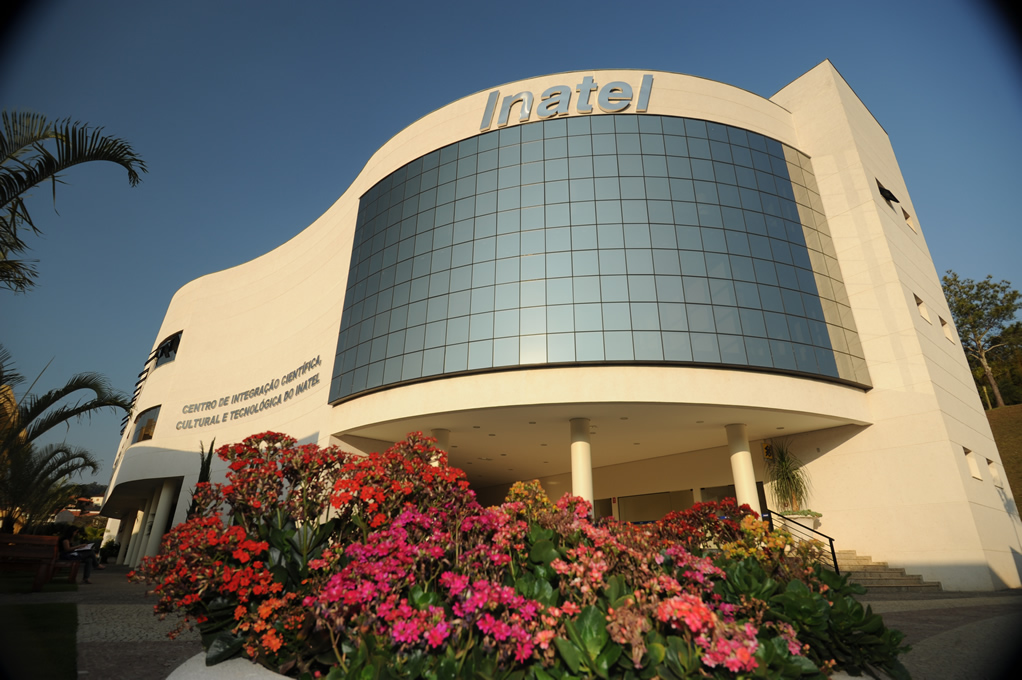With more than 240 million smartphones owned and 118 million users, Brazil is established as one of the biggest mobile internet markets globally, only trailing China, India, the United States, and Indonesia. Still, the country’s overall contribution to 3G, 4G, and 5G standards hasn’t been up to par. However, Brazilian researchers want to put an end to this trend in 6G.
In 2020, 11 universities and education institutions partnered to launch an initiative called Brasil 6G, which aims to concentrate all the national 6G research under one programme and promote exchange with the government and industries. The roadmap includes the development of a national platform to provide researchers with infrastructure to test 6G technology.
“Our goal is making sure that relevant use cases for Brazilian needs are supported by the future evolution of mobile networks,” Luciano Leonel Mendes, professor at Inatel and coordinator of the Brasil 6G initiative, explained in an interview with 6GWorld. “We want to build a solution that will enable this [6G] ecosystem to flourish the right way and make a contribution to the standardisation bodies.”
The initiative couldn’t have come at a better moment. While Brazil did indeed conduct research to develop 5G, the effort started a bit late, in 2013, when companies like Samsung were already testing transmissions using millimetre waves.
That’s a mistake Mendes doesn’t want to see happening this time around. “At the end of 2019, it was clear that now was the right time to start research on 6G. If Brazil aims to have an influence [globally] on the 6G evolution, we have to get started immediately. In 2020 we initiated phase one and now we’re entering phase two,” he explained.
So far, the initiative has produced nine reports in Portuguese and published 22 papers, some in cooperation with international partners like Finnish project 6G Flagship. It has also joined the one6G Association.
Understanding Where 6G Fits
Even though 6G use cases don’t differ much from place to place, there are some areas and situations where the next generation of networks would be more valuable or have a bigger impact. In Brazil, due to its size, different regions take different approaches.
“Researchers from the North region have a lot of concern about protecting the environment [mainly because of the Amazon Forest]; in Central-west, there’s a focus on agriculture; in the Southeast and South, we pay a lot of attention to the industry,” Mendes said. “So there are skillsets for different verticals and national requirements.”
During phase one, Brasil 6G identified six major use cases for next-gen networks:
- Extreme global coverage
- Agriculture and cattle production of the future
- Large scale digital twins
- Advanced remote interactions
- Invisible safe zones (use of AI and 6G to monitor crowds and ensure security for citizens with zero harassment)
- Space communications
The natural resources sector – including agriculture, cattle production, and petroleum exploitation – is expected to largely benefit from 6G. Just to give a sense of how important that type of production matters for the Brazilian economic landscape, agricultural production alone was projected to reach 280 million tons in the 2021/22 season.
“One of the biggest needs we must address in the country is [how to connect] remote and rural areas – even though it’s not a unique issue for Brazil,” Mendes told 6GWorld. “The point here is really how to make agriculture and cattle production even more profitable and efficient using technology.”
It’s not to say that Brazilian farmers are not trying to take advantage of innovations. According to the expert, the biggest players are already employing tools that can potentially enable real-time decision making – but the problem is that there is no communications network to actually do it.
“Without the network, most of the time the infrastructure is useless. You can’t get data from a combine harvester, for example, and decide where it goes next based on that data. You can’t control it remotely. There’s a series of restrictions because of the lack of connectivity,” Mendes pointed out. “But we have already understood that’s an essential demand to be addressed, and Brazil has been at the forefront of discussions around that topic.”
Adding to the International Conversation
Another field where Brazilian research has been advancing and contributing internationally, according to Mendes, is communications in deep waters.

In 2006, Brazilian state-owned Petrobras announced it has discovered the pre-salt layer, a 2,000-metre-thick oil reservoir resting 5,000 metres below the seabed. Since then, the country has been developing technology to make communications possible in such a challenging environment.
While connectivity in remote and rural areas and communications in deep waters have been driven by market needs, Mendes points out that there are several departments where Brazilian research has been – and should keep – contributing to international 6G discussions, notably aspects of the physical layer and TV white space.
“We’ve noted that the solution [for those topics] was basically replicating what a legacy technology would do and using for radio [frequencies], which doesn’t provide flexibility,” he explained. “We need to take into account, for example, spectrum occupancy so that you can switch frequencies. That requires a specifically designed physical layer. We have been working on this topic for a while and believe it can become a contribution to have 6G operating at unlicensed frequencies.”
This change in mindset doesn’t apply only to physical layers, though. Mendes points out that the cultural aspect also plays a significant role in how technologies are employed, especially Artificial Intelligence systems.
When it comes to bias, fighting structural racism is rightfully mentioned as the top priority to build fair and accurate AI databases. In such a multicultural world, however, researchers and developers must observe a few other aspects.
“We [Brazilians] have a very warm way to express ourselves. For example, a group of friends meet, one starts hugging each other and making some noise. If you’re using a neural network trained according to people’s average behaviour in Germany, the AI will understand it’s an atypical behaviour. And that could turn into the authorities believing there is some disturbance going on when, in fact, these friends are just speaking out loud on the beach,” Mendes observed.
“One must take the local particularities into account [when building and training the AI system]. I’d say, in our case, these particularities vary from state to state, can’t be even considered national. One kind of behaviour might be normal in the Northeast and be considered much different in the South.”
The Ambitious Phase Two
While the first part of the Brasil 6G effort was focused mainly on use cases and requirements, the second half aims to develop a platform that will provide Brazilian researchers with the opportunity to test solutions, algorithms, and ideas in a 6G environment.
The platform will rely on a hardware structure featuring state-of-the-art radio technology that has already started to be assembled. Another portion of the platform is software-driven and will enable researchers from across the country to test algorithms remotely.
The physical structure is stored in a 40-thousand-people town called Santa Rita do Sapucaí in the state of Minas Gerais, where Brasil 6G is headquartered. It is located more than 200 km away from major cities São Paulo and Rio de Janeiro and is considered a “Brazilian Silicon Valley”. The city is home to more than 150 tech companies and several universities.
According to Mendes, there will be actual transmission happening when the platform is ready for public demonstrations in two years’ time.
“The radio part of it, for instance, is functional and already able to transmit point-to-point. We also have the link layer working, even though it’s lacking some functionalities. And we are now studying how to integrate the core. We are looking at two solutions: Open Ran and proprietary core,” he said. “We’ll find a lot of challenges in this journey, but we expect to have integrations happening within a year.”
Down the 6G Road
As time goes by, more and more 6G projects will be kicking off across the country. The Federal University of Pará, one of the Brazilian ITU members, for example, has five 6G research initiatives under way. Other universities also carry their own work.
Mendes is aware of that reality. That’s why he says Brasil 6G is keeping track of those individual initiatives to get them under the initiative’s umbrella. So far, the effort has been proving successful.
“In Brazil, we’re being able to concentrate efforts and define common research goals, and that’s playing a huge role [in advancing research]. Now we’re really making some noise and being recognised,” he celebrated.
That’s only the beginning of the story. Mendes said that even though the initiative has been structured around two phases, Brasil 6G is planned to become perennial and build the foundation for whatever comes after 6G.
“I believe it’s important to keep the work concentrated under one initiative, towards one direction, because we have so few financial and human resources to work with. Few people are in a position to contribute with 6G research, so we’ve got to grow in the same direction.”







